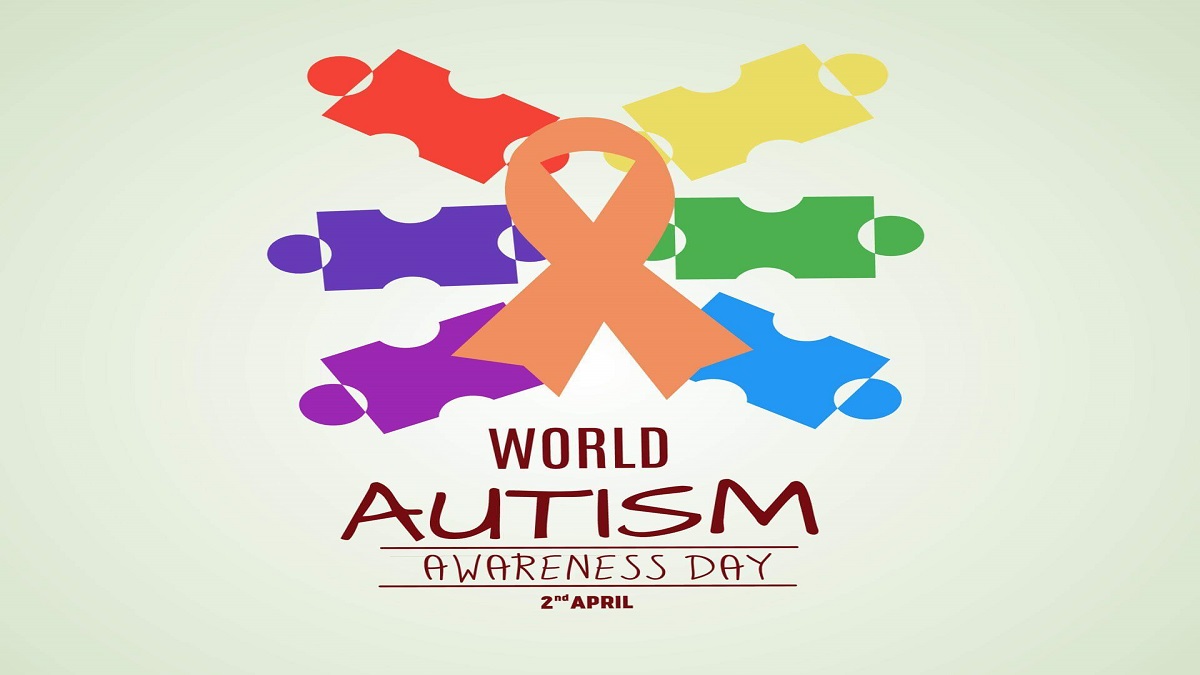World Autism Day, also called World Autism Awareness Day, is observed every year on the 2nd of April. It was designated by the United Nations General Assembly in late 2007. The day brings individual autism organisations all around the world together to aid in things like research, diagnoses, treatment, and acceptance for those with a developmental path affected by autism. Autism knows no geographic boundaries—it affects individuals and families on every continent and in every country. The celebration of World Autism Awareness Day is an important way to help the world better understand the scope of this health crisis and the need for compassion and acceptance for those living with autism.
The day is commemorated with several events and programmes in different parts of the world, which aim to raise awareness about the problem and to make society more sensitive to the needs of people living with autism. In a bid to raise awareness about this illness, the “Light It Up Blue” initiative was started in 2010 by Autism Speaks, an autism advocacy charity and the largest autism research organisation in the United States. As part of this initiative, hundreds of thousands of landmarks, buildings, homes and communities around the world light blue on World Autism Awareness Day (April 2) in recognition of people with autism. Since 2012, this special day has been celebrated with a special theme. The theme for this year – 2022, is “Inclusive Education For All”.

What is Autism?
The autism spectrum is an umbrella term covering a range of neurodevelopmental conditions referred to as autism spectrum disorder (ASD). The word spectrum is defined in the Diagnostic and Statistical Manual of Mental Disorders to cover a wider group of conditions and differences in the type and perceived severity of symptoms, a trend that developed in the 1980s; an alternative term, autism spectrum conditions, has been used by some to avoid perceived negativity associated with the word disorder. Asperger syndrome is included in the term autism spectrum disorder.
The 11th International Classification of Diseases (ICD-11), released in January 2021, characterises ASD with deficits in the ability of an individual to begin and sustain two-way social communication and restricted or repetitive behaviour unusual for the individual’s age or situation. Although linked with early childhood, the symptoms can appear later, frequently associated with increased social interaction. With considerable variation, also dependent on the context, deficits can cause impediments in personal, family, social, educational and occupational situations; those diagnosed with ASD range from the independent and gifted to the very challenged and needy requiring intervention and long-term support. Related to ASD is the broad autism phenotype (BAP), in which individuals have some of the symptoms of ASD, but an insufficient number or intensity of symptoms to justify an ASD diagnosis; BAP is particularly prevalent in close blood relatives of individuals with ASD.
Signs and Symptoms

Signs and symptoms associated with autism spectrum disorder can be detected before the age of two, and skilled practitioners can provide a reliable diagnosis even before that age. A diagnosis, on the other hand, may not come until much later in life, even well into adulthood. Specific or recurrent behaviours, increased sensitivity to materials, being upset by changes in routine, appearing to show diminished interest in others, avoiding eye contact, and restrictions in social situations and verbal communication are just a few of the warning indicators. When a social connection becomes more important, certain people who may have been missed face social and other forms of exclusion, and they are more likely to have concomitant mental and physical illnesses. Long-term issues include difficulties in performing activities of daily life, trouble managing schedules, hypersensitivities (e.g., to meals, noises, and fabric textures), forming and maintaining relationships, and keeping jobs.
Causes of Autism
The causes of autism spectrum disorders are unknown, and theories have been proposed to try to explain how they develop. Although genetic and neuroscientific studies have revealed risk factors, there is currently little information that can be used to find a cure for autism.
The problem is more likely to be heritable than environmental influences, according to research on twins. A genetic relationship has also been discovered in studies comparing data from different countries. A family history of ASD, having an older parent, some genetic diseases, certain prescribed medicines given during pregnancy, and overall perinatal and neonatal health deficits are all risk factors.
Autism and autistic traits, according to research, have always been a part of what makes us human. It has been shown that certain key autism genes are part of a shared ape heritage, which predates the “split” that led us along a “human” path. This was the time when our ancient ape ancestors split from apes that are alive today. Other autism genes are more recent in terms of evolution, however, they are still over 100,000 years old.
Autism is, on the whole, mainly genetic, according to research. Although a third of the cases of autism can be attributed to the occurrence of “genetic errors” or spontaneously occurring mutations, autism is generally more prevalent in certain families.
Further evidence can be found in traits shared between some cave art and talented autistic artists – such as those paintings found in the Chauvet Cave, in southern France. This contains some of the best-preserved figurative cave paintings in the world.

(Image source: theconversation.com)
The paintings are notable for their realism, remarkable memory skills, and meticulous attention to detail, as well as a concentration on parts rather than wholes. These autistic characteristics can be seen in talented artists without autism, but they are considerably more common among talented autistic artists.
Treatment
There is no known cure for autism, nor treatments that can significantly reduce certain brain mutations caused by autism. Several interventions can help children with autism. The main goals of treatment are to lessen associated deficits and family distress and to increase the quality of life and functional independence. In general, higher IQs are correlated with greater responsiveness to treatment and improved treatment outcomes. Although evidence-based interventions for autistic children vary in their methods, many adopt a psychoeducational approach to enhancing cognitive, communication, and social skills while minimising problem behaviours. It has been argued that no single treatment is best and treatment is typically tailored to the child’s needs.
Intensive, sustained special education or remedial education programs and behaviour therapy early in life can help children acquire self-care, social, and job skills. Available approaches include applied behaviour analysis, developmental models, structured teaching, speech and language therapy, social skills therapy, and occupational therapy. Among these approaches, interventions either treat autistic features comprehensively or focus treatment on a specific area of deficit. Generally, when educating those with autism, specific tactics may be used to effectively relay information to these individuals. Using as much social interaction as possible is key in targeting the inhibition autistic individuals experience concerning person-to-person contact.

There has been increasing attention to the development of evidence-based interventions for young children with ASD. Two theoretical frameworks outlined for early childhood intervention include applied behavioural analysis (ABA) and the developmental social-pragmatic model (DSP). Although ABA therapy has a strong evidence base, particularly in regard to early intensive home-based therapy, ABA’s effectiveness may be limited by the diagnostic severity and IQ of the person affected by ASD.
Generally speaking, treatment of ASD focuses on behavioural and educational interventions to target its two core symptoms: social communication deficits and restricted, repetitive behaviours. If symptoms continue after behavioural strategies have been implemented, some medications can be recommended to target specific symptoms or co-existing problems such as restricted and repetitive behaviours (RRBs), anxiety, depression, hyperactivity/inattention and sleep disturbance. Melatonin for example can be used for sleep problems.


